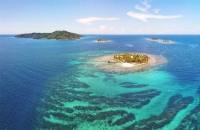Dangerous lobster fishing in La Mosquitia
Imagine diving up to 15 times a day at an average depth of 90 feet for 12/15 days with less than a week break and continue this process for 8 months.This is the life of many people in La Mosquitia, a poor and remote region covered by tropical forest between Honduras and Nicaragua with a population of approximately 80000 people divided in four main ethnic groups, Misquitos, Garifuna, Tawahkas and Petch. Most of these people don’t have any other options other than scuba diving for fishing lobster.
HOW MUCH IS IT WORTH?
The Lobster Fishing Industry is a multimillion dollar business. With an average of 37,000 tons of lobster fished every year and an estimated value of US$500 million, it provides a livelihood for approximately 250,000 people along the Mesoamerican reef, including artisanal and commercial fishermen and all the people involved in the production chain. (FAO 2013). It is one of the largest and most important fisheries in Central America and the Caribbean and most of it is consumed in the United States. According to the C/A Center for Marine Studies, Honduras alone exports over $40 million worth of lobster just to the U.S. market every year.
Scuba diving for lobster is considered one of the most dangerous job in the world.
According to "Global GOAL" every year, just in Honduras, between 2500 and 3000 divers are used to fish lobster. They dive up to 15 times a day, sometimes even more, to a depth of 100ft. Some of them die and many others get paralysed for the rest of their life. Decompression sickness involves many problems beside the paralysis, like deafness, impotence, respiratory failure, blindness, migraines and other health issues. In Honduras, during the fishing season of 2017/18, 2.8 million pounds of Lobster were fished, approximately 1/3 of it was fished using scuba divers (DIGEPESCA 2018)

THE FISHING
There are two different commercial ways to fish lobsters. One is with traps. Commercial lobster fishing vessels spend 8 months at sea working with wooden traps laid on the seafloor waiting for lobster to get in. The other method is using scuba divers. Scuba diving for fishing lobster is very dangerous, It is probably the most dangerous job in the world. This fishing method is still used in Honduras and Nicaragua.
Lobster fishermen divers dive with no computers and often they don’t even know about decompression risks. They are paid on a piecework basis, so they push themselves to the limits in order to make more money.
Many of them die or get paralysed for the rest of their life



CARIBBEAN SPINY LOBSTER (Panulirus argus)
All images in this blog belong to Antonio Busiello.
See more photo about this essay on http://www.antoniobusiello.com/stories/dying-for-lobster



